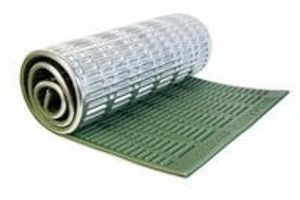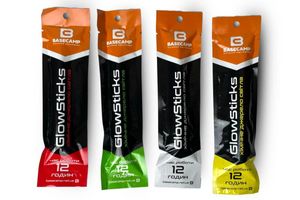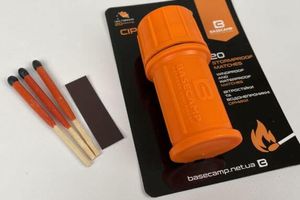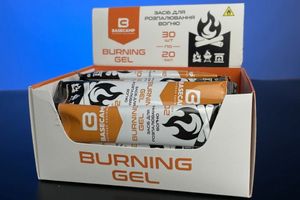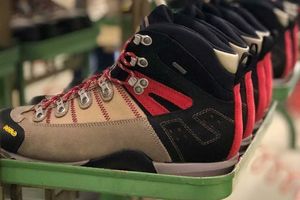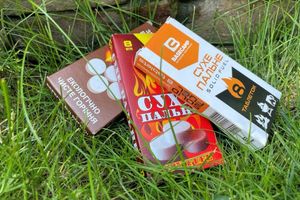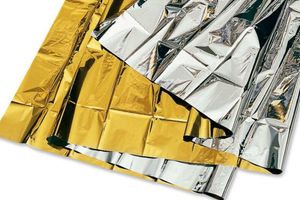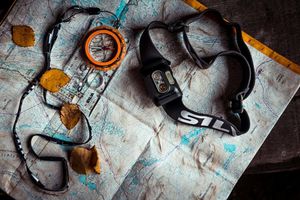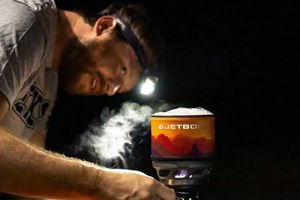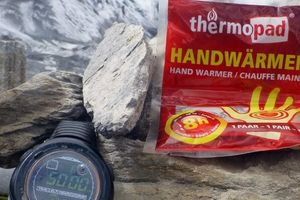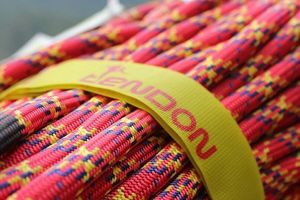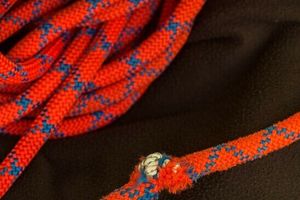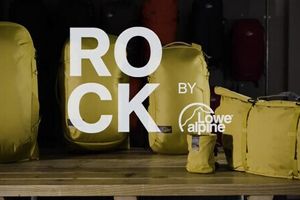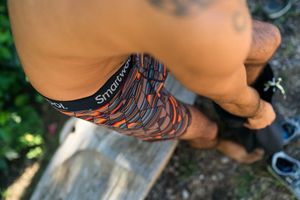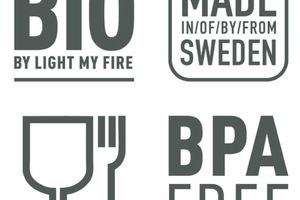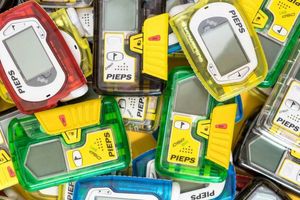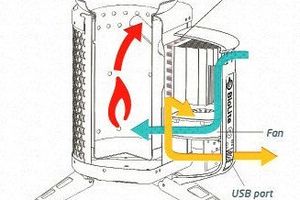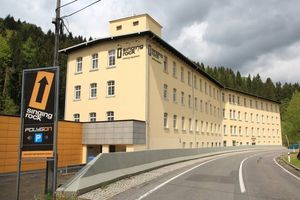The Jetboil Personal Cooking System (PCS) gas burner debuted at the Outdoor Retailer Show in Salt Lake City in the summer of 2003. The brothers returned from this exhibition with orders for 20,000 burners, which had to be delivered to stores by January 2004. These orders allowed the company to allocate funds for further development. However, the founders of the Jetboil company did not yet know what success awaits the personal cooking system in derivative conditions after the start of sales. Twenty thousand burners were completely sold out in less than 11 months! And this despite the fact that they were not the cheapest burners on the equipment market.
PCS has certainly created a stir and interest among travelers. In addition to excellent sales in stores, it received high reviews in the press.
Backpacker magazine included the Jetboil PCS burner in its 2004 Buyer's Guide, naming it a "Best Buy of the Year," and in December 2004, Dwight and Perry were already interviewed by Outside magazine about their company and its successful growth.
The secret of such success was the breakthrough for its time design of the Jetboil system (gas burner + cup with radiator). It gave rise to a whole class of modern portable tourist gas burners with integrated cooking systems.
For decades in the market of gas burners and cooking systems, the name Jetboil has become a household name, and now tourists and travelers call similar systems produced by other brands - the Jetboil system.
At the heart of such a system are several important distinguishing features, originally inherent only to Jetboil products:
- all components of the system "pan with heat exchanger + gas burner + gas cylinder" work 100% efficiently only with each other;
- all components of the system are packed inside the pot to save space in the backpack and reduce assembly time;
- the integrated system is designed in such a way as to minimize fuel consumption during water boiling. In the Jetboil pan, such an element became the Flux Ring radiator, which does not allow the heat released by the burner to dissipate, accumulates it, and transfers it to the pan walls, reducing gas consumption for heating water;
- A distinctive feature of the Jetboil system was the ability to rigidly connect all components into one block, so it became possible to cook on the burner in difficult conditions. It can be hung in a tent or on a platform during wall climbing, fixed on a boat or kayak.
Designers assigned a special role to small things that increased the ergonomics of the system:
- a beautiful neoprene cover that allows you to hold the glass without getting burned;
- plastic cover with a hole for steam removal and water drainage;
- a tripod-stand allows you to install a 100 g small gas cylinder included in the set;
- the water boiling indicator on the cover appeared on the Jetboil Flash burner model;
- pocket for cutlery on the neoprene cover of the burner.
But the success of the Jetboil system was due to more than this. Many users were attracted by its unusualness and uniqueness, and as the first burner of its kind, it became the final touch in the list of equipment for fast and light of the early 2000s.
By 2004, backpacks, tents, clothing, sleeping bags and shoes, etc., underwent revolutionary changes in equipment in terms of weight reduction without loss of strength and functionality. At the same time, the market of portable fuel equipment for hiking at the beginning of the 21st century did not give lovers of light equipment and solo trips much choice. The weight of the burners decreased every year with the use of lighter materials, while the power of the burners remained unchanged, with a large gas flow.
In such a situation, Jetboil products became a real breakthrough for the outdoor industry, because they consumed half as much fuel to boil one liter of water as compared to a conventional burner. The gas savings paid for the weight of the system itself - 430 grams, and its slowness: the burner boiled a liter of water in 5 minutes, while the powerful burners of competitors coped in 3.5-4 minutes.
Very low fuel consumption even served as the basis for various myths that Jetboil burners somehow increase the flammability of the gas mixture with the help of some harmful substance-catalyst.
In the wake of the success of personal cooking systems, the Jetboil company began to expand its range. In 2008, GCS - Group Cooking System was released: almost the same as PCS, only with an enlarged cauldron included.
In the following 2009, the Jetboil Flash burner debuted - the company's most popular and recognizable burner. The novelty was a deep modernization of the PCS: the power of the burner was increased, thanks to which the boiling time was reduced by half - to 2.5 minutes, and a heat indicator was added to the neoprene cover, which changes color when the water boils. Despite this, the new system has become lighter by 40 grams.
A Flash Java Kit is also available, which includes a coffee press. And in 2012, three new models appeared at once:
- Zip - the most affordable burner in the line. In fact, it is a reincarnation of the PCS, only its volume was reduced to 0.8 l, and the piezo ignition was removed from the model.
- SUMO - system with a cauldron of increased volume of 1.8 l.
- SOL and SOL Ti. The name of the systems is an abbreviation of So Outrageously Light, which translates as "outrageously light". They became the lightest and at the time the most expensive cooking systems in Jetboil. The SOL system became lighter mainly due to the pan: its volume was reduced from 1 to 0.8 liters, which gave a total weight of about 300 grams. And for the SOL Ti system, the same reduced boiler was made of titanium, which allowed to achieve a weight of 256 grams - 120 grams less than that of the Flash burner.
But the company's competitors did not sleep either. The MSR company used the ideas of brothers Dwight and Perry, but presented an original design - the Reactor system.
Other companies initially simply copied PCS: this was done by Kovea, releasing the Alpine Pot system, and also by Primus, presenting the Eta Solo system.
A trial took place in 2010-2011. During it, the Jetboil company accused the Primus company of infringing its American patents. However, the lawsuit was not satisfied, primarily due to the well-built defense line of Primus. During the lawsuit, the Primus Eta Solo burner, which copies the PCS, was discontinued. It was refined and returned to the market only in 2013.
Meanwhile, the rampant growth in the number of Jetboil burner imitators continued, it was easy to repeat the general layout of PCS, and Jetboil had already done the main work of popularizing such systems. This litigation situation influenced Perry and Dwight's decision to sell Jetboil to the American group Johnson Outdoors. In the spring of 2012, Jetboil was sold for $16 million. Perry Doust changed the post of general director to the position of chief consultant-developer.
For 10 years, the Jetboil company managed to revolutionize the world of traditional cuisine, creating a fundamentally new class of integrated cooking systems, popularizing radiator dishes that help save fuel when cooking for many tourists and travelers.
The company's team still manages to keep pace in the competitive race in its segment with strong rivals such as MSR and Primus, as well as compete with a large following. Moreover, the created PCS layout turned out to be so successful that even specialists from the MSR company, who do not like to "do like everyone else", still developed a series of Windburner burners, which repeated the classic Jetboil burners.
The model range of burners is constantly replenished with one of the latest novelties, the Jetboil Mightymo lightweight derivative gas burner for cooking in pots and pans without an integrated system from any manufacturer. A light gas burner allows you to significantly reduce the weight of equipment.
Features:
Power: 3 kW;
Weight: 95 grams;
Boiling time for 1 liter of water: 3 minutes 15 seconds;
Gas consumption: 12 liters of water / 100 g gas cylinder;



